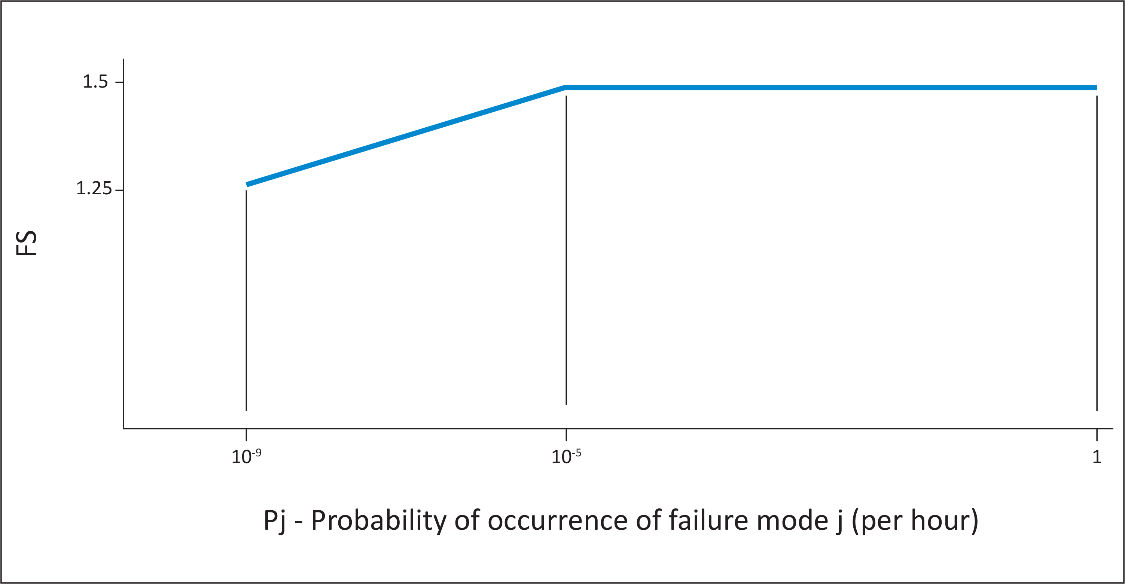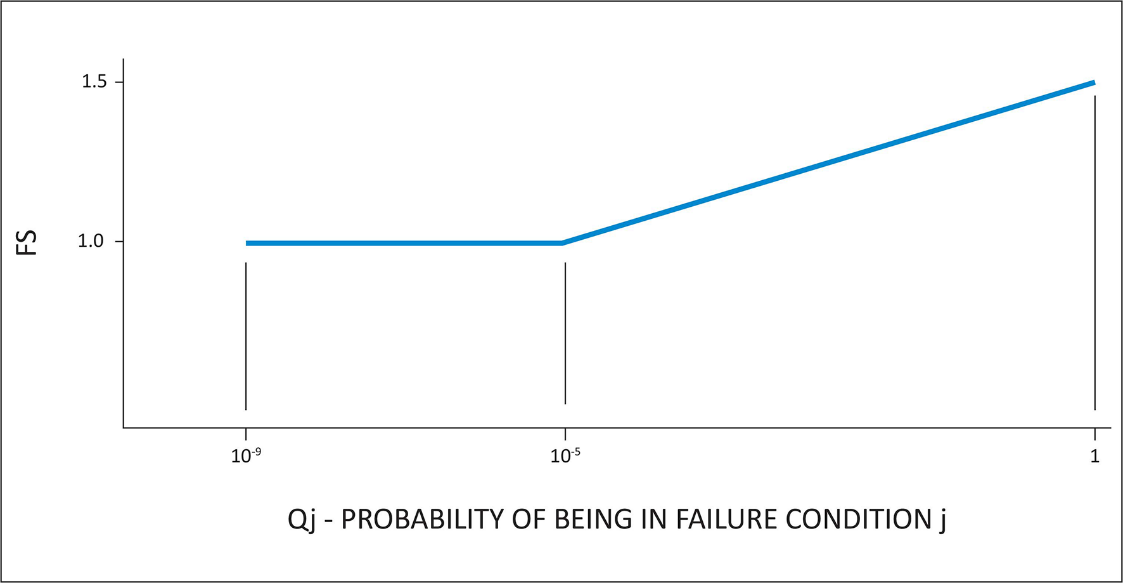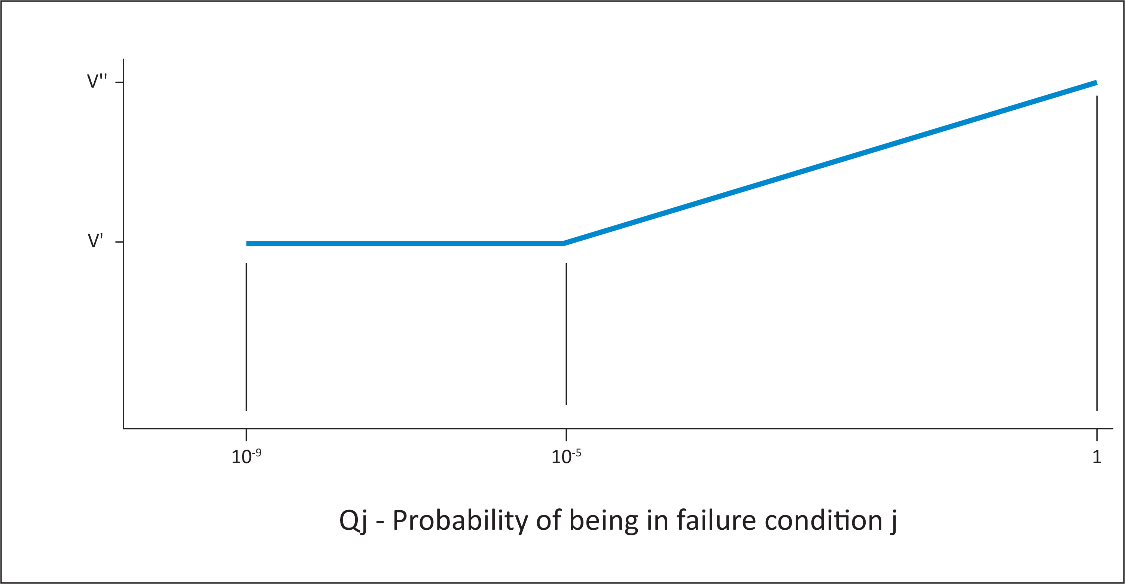K25.2 Effects of Systems on Structures
ED
Decision 2005/006/R
(a) General. The
following criteria will be used in determining the influence of a system and
its failure conditions on the aeroplane structure.
(b) System fully
operative. With the system fully operative, the following apply:
(1) Limit loads must be derived in all normal
operating configurations of the system from all the limit conditions specified
in Subpart C, taking into account any special behaviour of such a system or
associated functions or any effect on the structural performance of the
aeroplane that may occur up to the limit loads. In particular, any significant
nonlinearity (rate of displacement of control surface, thresholds or any other
system nonlinearities) must be accounted for in a realistic or conservative
way when deriving limit loads from limit conditions.
(2) The aeroplane must meet the strength
requirements of CS-25 (Static strength, residual strength), using the
specified factors to derive ultimate loads from the limit loads defined above.
The effect of nonlinearities must be investigated beyond limit conditions to
ensure the behaviour of the system presents no anomaly compared to the
behaviour below limit conditions.
However, conditions beyond limit conditions need not be considered when
it can be shown that the aeroplane has design features that will not allow it
to exceed those limit conditions.
(3) The aeroplane must meet the aeroelastic
stability requirements of CS 25.629.
(c) System in the
failure condition. For any system failure condition not shown to be
extremely improbable, the following apply:
(1) At the time of occurrence. Starting from
1-g level flight conditions, a realistic scenario, including pilot corrective
actions, must be established to determine the loads occurring at the time of
failure and immediately after failure.
(i) For static strength substantiation, these
loads multiplied by an appropriate factor of safety that is related to the
probability of occurrence of the failure are ultimate loads to be considered
for design. The factor of safety (F.S.) is defined in Figure 1.

Figure 1 Factor of safety at the
time of occurrence
(ii) For residual strength substantiation, the
aeroplane must be able to withstand two thirds of the ultimate loads defined
in subparagraph (c)(1)(i). For pressurised cabins, these loads must be
combined with the normal operating differential pressure.
(iii) Freedom from aeroelastic instability must
be shown up to the speeds defined in CS
25.629(b)(2). For failure conditions that result in speed increases beyond VC/MC,
freedom from aeroelastic instability must be shown to increased speeds, so
that the margins intended by CS 25.629(b)(2) are maintained.
(iv) Failures of the system that result in
forced structural vibrations (oscillatory failures) must not produce loads
that could result in detrimental deformation of primary structure.
(2) For the continuation of the flight. For
the aeroplane, in the system failed state and considering any appropriate
reconfiguration and flight limitations, the following apply:
(i) The loads derived from the following
conditions at speeds up to VC / MC, or the speed
limitation prescribed for the remainder of the flight must be determined:
(A) the limit symmetrical manoeuvring
conditions specified in CS 25.331 and in CS 25.345.
(B) the limit gust and turbulence conditions
specified in CS 25.341 and in CS 25.345.
(C) the limit rolling conditions specified in CS 25.349 and the limit unsymmetrical conditions specified in CS 25.367
and CS 25.427(b) and (c).
(D) the limit yaw manoeuvring conditions
specified in CS 25.351.
(E) the limit ground loading conditions
specified in CS 25.473 and CS 25.491.
(ii) For static strength substantiation, each
part of the structure must be able to withstand the loads in subparagraph
(2)(i) of this paragraph multiplied by a factor of safety depending on the
probability of being in this failure state. The factor of safety is defined in
Figure 2.

Figure 2 Factor of safety for
continuation of flight
Qj = (Tj)(Pj)
where:
Tj = Average
time spent in failure condition j (in hours)
Pj = Probability
of occurrence of failure mode j (per hour)
Note: If Pj is greater than 10-3, per flight hour then a 1.5 factor of
safety must be applied to all limit load conditions specified in Subpart C.
(iii) For residual strength substantiation, the
aeroplane must be able to withstand two thirds of the ultimate loads defined
in subparagraph (c)(2)(ii). For pressurised cabins, these loads must be
combined with the normal operating differential pressure.
(iv) If the loads induced by the failure
condition have a significant effect on fatigue or damage tolerance then their
effects must be taken into account.
(v) Freedom from aeroelastic instability must
be shown up to a speed determined from Figure 3. Flutter clearance speeds V'
and V'' may be based on the speed limitation specified for the remainder of
the flight using the margins defined by CS 25.629(b).

Figure 3: Clearance speed
V' = Clearance
speed as defined by CS 25.629(b)(2).
V'' = Clearance
speed as defined by CS 25.629(b)(1).
Qj = (Tj)(Pj) where:
Tj = Average
time spent in failure condition j (in hours)
Pj = Probability
of occurrence of failure mode j (per hour)
Note: If Pj is greater than 10-3 per flight hour, then the flutter
clearance speed must not be less than V''.
(vi) Freedom from aeroelastic instability must
also be shown up to V' in Figure 3 above, for any probable system failure
condition combined with any damage required or selected for investigation by CS 25.571(b).
(3) Consideration of certain failure
conditions may be required by other Subparts of CS-25 regardless of calculated
system reliability. Where analysis shows the probability of these failure
conditions to be less than 10-9, criteria other than those
specified in this paragraph may be used for structural substantiation to show
continued safe flight and landing.
(d) Failure indications.
For system failure detection and indication, the following apply:
(1) The system must be checked for failure
conditions, not extremely improbable, that degrade the structural capability
below the level required by CS-25 or significantly reduce the reliability of
the remaining system. As far as reasonably practicable, the flight crew must
be made aware of these failures before flight. Certain elements of the control
system, such as mechanical and hydraulic components, may use special periodic
inspections, and electronic components may use daily checks, in lieu of
detection and indication systems to achieve the objective of this requirement.
These certification maintenance requirements must be limited to components
that are not readily detectable by normal detection and indication systems and
where service history shows that inspections will provide an adequate level of
safety.
(2) The existence of any failure condition,
not extremely improbable, during flight that could significantly affect the
structural capability of the aeroplane and for which the associated reduction
in airworthiness can be minimised by suitable flight limitations, must be
signalled to the flight crew. For example, failure conditions that result in a
factor of safety between the aeroplane strength and the loads of Subpart C
below 1.25, or flutter margins below V", must be signalled to the crew
during flight.
(e) Dispatch with known failure conditions. If
the aeroplane is to be dispatched in a known system failure condition that
affects structural performance, or affects the reliability of the remaining
system to maintain structural performance, then the provisions of CS 25.302
must be met for the dispatched condition and for subsequent failures. Flight
limitations and expected operational limitations may be taken into account in
establishing Qj as the combined probability of being in the dispatched failure
condition and the subsequent failure condition for the safety margins in
Figures 2 and 3. These limitations must be such that the probability of being
in this combined failure state and then subsequently encountering limit load
conditions is extremely improbable. No reduction in these safety margins is
allowed if the subsequent system failure rate is greater than 10-3
per hour.
[Amdt
25/1]